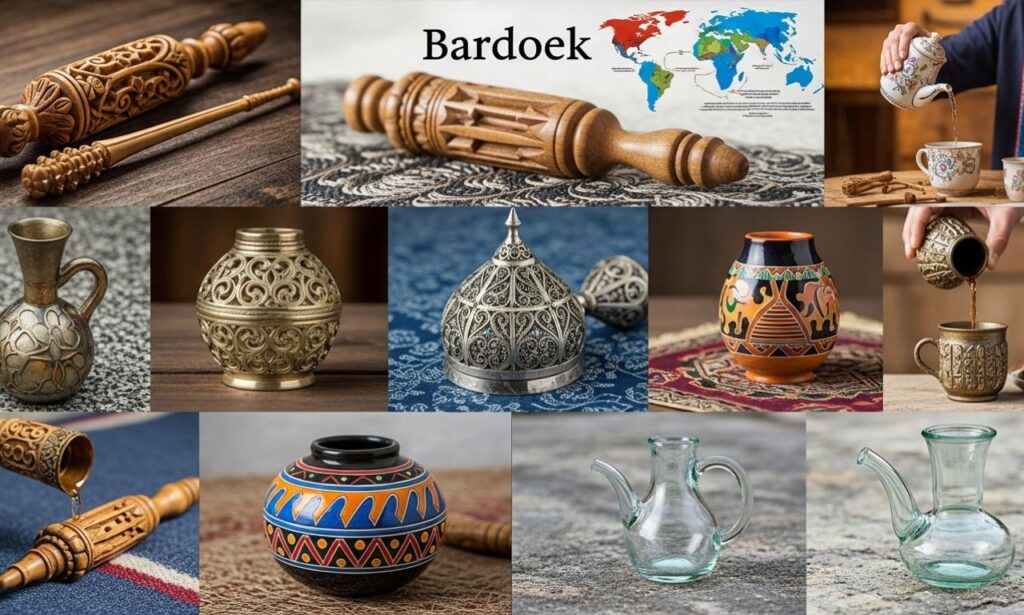Bardoek is more than just a term; it represents a tapestry of cultural expression that has woven its way through societies across the globe. From traditional gatherings to modern adaptations, bardoek captures the essence of community and creativity. Imagine vibrant festivals, intricate designs, and stories passed down through generations—all encapsulated in this captivating concept. As we explore the diverse variations and adaptations of bardoek in different cultures, you’ll discover how this unique phenomenon continues to evolve while retaining its rich heritage. Join us on this journey as we delve into what makes bardoek so fascinating and significant around the world.
What is Bardoek?
Bardoek is a fascinating term that encompasses various interpretations across cultures. At its core, it often refers to a form of artistic expression or storytelling. This concept thrives on creativity and the unique perspectives of different societies.
Typically, bardoek can manifest as music, dance, or visual art. Each tradition brings its own flavor to this versatile medium. It reflects the values and beliefs inherent in each culture’s history.
In some regions, bardoek serves as a means of preserving folklore and community ties. In others, it’s an avenue for personal expression and exploration of identity.
The beautiful aspect lies in its adaptability; bardoek evolves while honoring its roots. As such, it becomes a canvas for cultural dialogue and understanding across boundaries.
Origins and History of Bardoek
Bardoek traces its roots back to ancient civilizations, where it served as more than just a physical object. It was intertwined with cultural identities and practices. The name itself has different interpretations depending on the region.
Historically, bardoek evolved alongside societal changes. Communities adapted the concept to reflect their unique traditions and beliefs. From sacred rituals to everyday use, its significance grew over centuries.
In Eastern cultures, early versions of bardoek can be seen in ceremonial attire or decorative art forms. Meanwhile, Western adaptations began emerging during the Renaissance period when aesthetics took center stage.
Each iteration tells a story of transformation and connection among people through time. This evolution highlights how bardoek is not merely an artifact but a living expression of shared experiences across various cultures worldwide.
Bardoek in Eastern Cultures
Bardoek holds a special place in various Eastern cultures, often reflecting deep-rooted traditions and spiritual beliefs. In regions like South Asia, it is sometimes woven into religious ceremonies, symbolizing interconnectedness between the physical world and the divine.
In Middle Eastern contexts, bardoek can be seen as a form of artistic expression. It’s not just about aesthetics; it’s also about storytelling. Patterns and colors are chosen to convey narratives or historical events.
Eastern cultures celebrate variations of bardoek through festivals that honor heritage. Each region has its unique twist on materials and techniques used in crafting them.
This adaptability allows for rich symbolism tied closely to local customs while still echoing universal themes found across different societies. As such, bardoek becomes more than an object; it transforms into a cultural artifact with layers of meaning waiting to be explored.
Bardoek in Western Cultures
Bardoek has found its way into Western cultures, often taking on unique characteristics. In various regions, it serves as a canvas for creativity and expression.
In the culinary realm, bardoek is frequently associated with comfort food. People enjoy variations that combine local ingredients and flavors. Think of hearty stews or baked dishes that reflect regional tastes.
Artistic interpretations also thrive in the West. Musicians incorporate bardoek themes into their work, blending traditional sounds with contemporary styles. This fusion creates a vibrant cultural exchange.
Festivals celebrating are popping up across cities. These events encourage community participation through music, dance, and art installations focused on this rich tradition.
As more people discover bardoek’s charm, it continues to evolve within Western contexts while retaining its roots in history and culture.
Unique Variations and Adaptations of Bardoek
Bardoek has seen fascinating transformations across various cultures. Each region adds its unique flair, creating a rich tapestry of adaptations.
In some Eastern traditions, takes on spiritual dimensions. These versions often incorporate rituals that symbolize life’s transitions and the journey of the soul.
Conversely, Western interpretations lean toward more practical applications. Here, might be used as a storytelling device in literature or film, capturing human emotions and experiences.
Certain communities also infuse local flavors into bardoek recipes or practices. Whether it’s variations in ingredients or methods passed down through generations, these adaptations reflect regional identities.
Artistic portrayals of abound too. Musicians and painters have drawn inspiration from this concept to create pieces that resonate with broader themes such as love and loss.
These unique manifestations show how adaptable bardoek truly is while maintaining its core essence across different environments.
Cultural Significance of Bardoek
Bardoek holds deep cultural significance across various societies. In many traditions, it symbolizes unity and community. When shared during gatherings, it fosters connections among people.
In Eastern cultures, often appears in rituals and celebrations. It reflects spiritual beliefs and the importance of nature in daily life. The ingredients used can carry symbolic meanings tied to the harvest or seasonal changes.
Western adaptations have also embraced but with a twist. Here, it represents culinary creativity and individual expression. Chefs experiment with flavors and presentations, making each dish unique while honoring its roots.
Moreover, serves as a bridge between generations. Families pass down recipes that tell stories of their heritage and customs. This act preserves history while nurturing bonds within communities.
Cultural events celebrating bardoek encourage appreciation for diverse food practices worldwide. Each variation reveals insights into local values and lifestyles, enriching our understanding of global cuisines.
Modern Day Influence and Popularity of Bardoek
Bardoek has transcended its traditional roots, evolving into a symbol of cultural fusion. Today, it appears in various forms across social media platforms and culinary blogs. Chefs experiment with -inspired recipes, integrating local ingredients while maintaining its essence.
The rise of global cuisine has sparked interest in among food enthusiasts. Cooking classes featuring this dish attract diverse audiences eager to learn about different cultures through their flavors.
Festivals celebrating are becoming increasingly popular worldwide. These events not only showcase the dish but also encourage community engagement and exchange of ideas.
Influencers on platforms like Instagram share visually stunning interpretations of bardoek, drawing attention from followers who appreciate both aesthetics and taste. This digital presence amplifies its allure, making it accessible to a broader audience than ever before. As more people discover the rich history behind this dish, its popularity continues to soar globally.
Conclusion
Bardoek embodies a rich tapestry of cultural significance across the globe. It serves as a bridge, connecting generations and communities through its various adaptations. Each culture adds its own flavor to this concept, making it uniquely theirs while retaining core elements that resonate universally.
As we explore journey through history and into modern times, it’s evident that its impact stretches beyond mere tradition. Today, it finds itself in contemporary art forms and social expressions, proving that even age-old concepts can thrive amidst changing landscapes.
The enduring appeal of is not merely an echo of the past; it reflects our ongoing quest for connection and understanding amid diversity. As cultures continue to evolve, so too will the interpretations of bardoek—ensuring this remarkable phenomenon remains relevant for generations to come.






